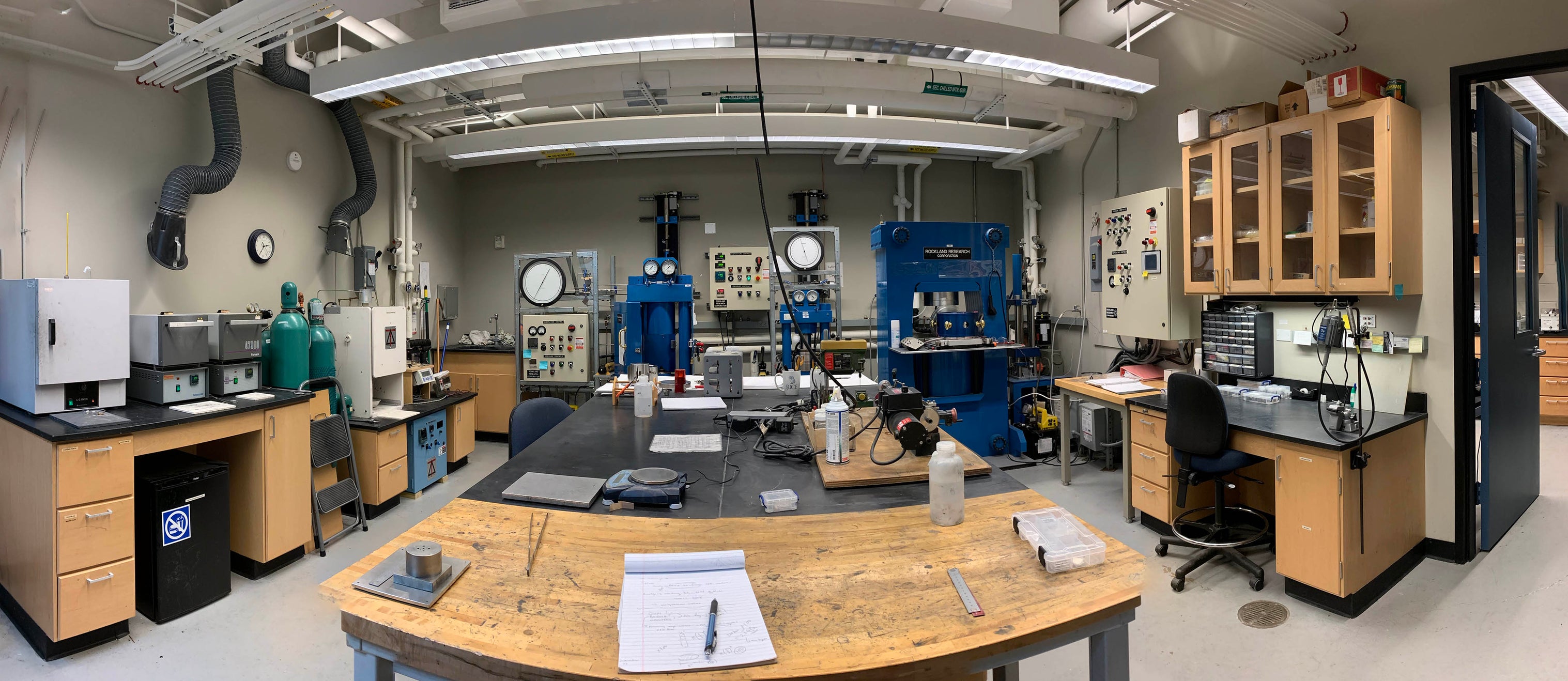
Piston Cylinder Devices
The lab houses two Rockland Research piston cylinder (PC) devices from with 250-ton (GUPI; picture to the left) and 150-ton (BAGHA; picture to the right) end loads. Both the devices are equipped with fully automated pressure and temperature controllers and are capable of generating pressures up to 3.5 GPa and temperatures up to 2000 °C. The lab also has a 10-ton press, used for making salt pressure medium for PC experiments and for extracting compressed assembly after experiments.
Multi-Anvil Apparatus
In June 2012, we took delivery of an 1100-ton Rockland Research press, equipped with an octahedral, Walker-style multi anvil module. In this press, currently we are using 12 mm Walker-style castable assembly.
Gas-mixing Furnace
The experimental petrology lab also houses a Deltech, vertical tube furnace with gas mixing capability. This Deltech furnace is mostly used for dehydration and decarbonation of starting samples and material synthesis at known oxygen fugacity. Samples can be surrounded by air, inert gas or a CO/CO2 mixture and heated up to 1700 °C. The furnace is equipped with digital mass flow controllers for controlled flow of CO and CO2 gases and a partially stabilized zirconia solid-electrolyte cell for monitoring oxygen fugacity at high temperatures.
Other Miscellaneous Facilities
Extensive facilities including a bench-top lathe, high-precision balances, a slow-speed diamond saw, a wire-saw, one abrasive strip grinder, and two rotary polishing wheels are available for preparation of starting materials, machining of experimental assembly parts, and for sectioning and polishing of completed experiments at the experimental petrology lab of Rice University. In addition, Rice also has a Research Support Shop, which is regularly used for precision machining of parts and components for experimental preparation.
Microscopes
The lab houses one Zeiss Axioscope 20 petrographic microscope, equipped with both transmitted and reflected light source, an MRC 5 high resolution camera, and an imaging workstation. The petrographic microscope is used primarily for documenting textures of polished experimental samples. The lab also houses a couple of Zeiss binocular microscopes for characterization of experimental samples and assembly parts both before and after experiments.
